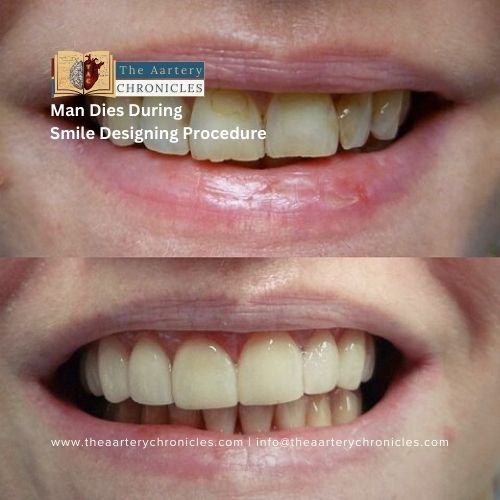

Navigating Dental Challenges in Individuals with Down Syndrome
According to the National Institutes of Health, Down syndrome, also known as trisomy 21, is a genetic disorder caused by the presence of all or a portion of a third chromosome 21. Down syndrome is caused by the presence of an extra chromosome at the time of birth. Patients with Down syndrome generally exhibit physical and intellectual growth retardation, delayed development, and other abnormalities, including cardiac and gastrointestinal disorders. [1]
A number of these characteristics, such as learning difficulty, heart abnormalities, and an altered immune system, can have a significant impact on oral health and dental care delivery.
Physical Features of Down Syndrome
Some common physical features of Down syndrome include:
- Flattened face and flat nasal bridge
- Short stature
- Palmar crease: a single deep crease runs along the center of the palm
- Low muscle tone
- Brachycephaly (flat head): the back of the head becomes flattened
- Microcephaly: smaller head than normal
- Hypertelorism: widely spaced eyes
- Palpebral fissures: slanted, upturned eyes
- Burghfield spots: white spots on the colored part (iris) of the eye
- Small pink finger pointing inwards towards the thumb.
- Ears, hands, and feet are smaller than the average size
- Protruding tongue that tends to stick out of the mouth [2, 3]

In addition to physical manifestations, individuals with Down syndrome also experience intellectual disabilities that cause them to suffer from mild to moderate cognitive impairment. A higher prevalence and incidence of dental and oral conditions are also seen in patients with Down syndrome.
Oral Manifestations in Individuals with Down Syndrome
Individuals with Down syndrome are affected by immunological deficiencies, which predispose them to dental diseases and disorders, and this may in turn aggravate systemic diseases. [4]
Common oral soft tissue manifestations of individuals with Down syndrome include:
- Macroglossia: The size of the tongue is large relative to the size of the oral cavity.
- Fissured tongue (scrotal tongue), geographic tongue, and cracked lips
- Macroglossia can lead to persistent mouth opening, which may result in
- Drooling
- Mouth breathing
- Oral infections like angular cheilitis
- Shelf-like or stair palate: high-arched, and narrow palatal vault
- Malalignment and malocclusion of teeth
- Microdontia: teeth smaller than the average size
- Hypodontia: developmentally missing teeth
- Delayed eruption of teeth [5, 6, 7]
Some other oral diseases and conditions commonly encountered in individuals with Down syndrome are:
- Tooth decay and dental caries
- Periodontal diseases: gum disease (gingivitis and periodontitis)
- Bruxism (teeth grinding)
- Mouth Breathing
- Diastema
- Premature tooth loss
- Anterior open bite
- Temporomandibular joint dysfunction [5]

Dental Care for Patients with Down Syndrome
Some dental care practices recommended for patients with Down syndrome include:
- Brushing teeth twice daily with a soft bristle toothbrush and fluoride-containing toothpaste. Children less than 2 years of age should get a thin “smear” of fluoride toothpaste, while children between 2 and 5 years should get a small, “pea-sized” amount.
- Limiting the frequency of sugar and bread-based snacks and avoiding sugary, sticky food at night.
- The first dental visit should be made within 6 months of the first tooth eruption or by 1 year of age.
- Visiting the dentist regularly is usually recommended within every 6 months, but some people may need to go more often. [7]
Conclusion:
Regular preventive care plays a crucial role for people with Down syndrome, and it might include counseling like dental and dental hygiene therapy, nutrition counseling, professional and at-home fluoride therapy, the use of mouthwash, and oral hygiene instructions for the patient, parent, or caregiver.
- About Down Syndrome | National Institutes of Health (NIH)
- What are the symptoms of Down syndrome? | NICHD - Eunice Kennedy Shriver National Institute of Child Health and Human Development (nih.gov)
- Down syndrome - Symptoms and causes - Mayo Clinic
- Oral health status in individuals with Down syndrome - PMC (nih.gov)
- Implications of Down’s syndrome on oral health status in patients: A prevalence-based study - PMC (nih.gov)
- Oral microbiome in down syndrome and its implications on oral health - PMC (nih.gov)
- Dentistry & Down Syndrome | National Down Syndrome Society (NDSS)

Author: Dr. Anjali Singh
BDS [KGMC, Lucknow]
- Medicine and Diseases
- Nutrition and Diet
Lorem ipsum dolor sit amet, consectetur adipiscing elit. Ut elit tellus, luctus nec ullamcorper mattis, pulvinar dapibus leo.
















